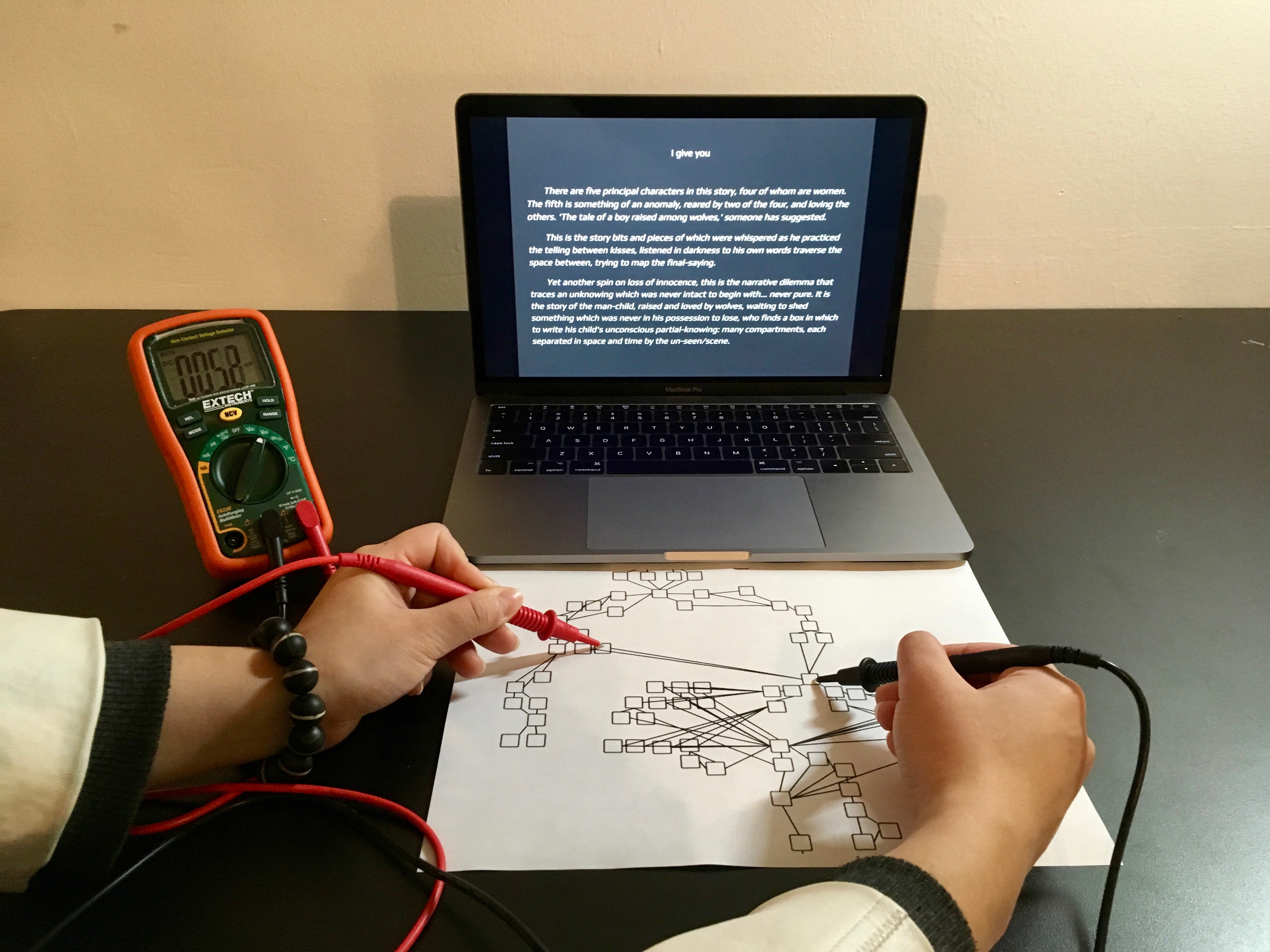ICM & PhysComp » Final: Initial Thoughts
I studied electronic literature and hypertext fiction in college.
My thesis was a narrative written in StorySpace, the first true hypertext authoring environment created specifically for writers. The English department came very close to denying me my diploma because I submitted the requisite two copies of my thesis on 3.5 inch floppy disks whereas departmental policy stipulated two copies, printed and bound.
This was in 1995.
During that time, I thought a great deal about what narrative aesthetic might best lend itself to a digital non-linear form. That’s a big part of the challenge, certainly. What stories are best told in which form.
At the time most non-linear narrative was poorly written and fairly un-sophisticated but the more interesting works explored how, whether or not, and to what extent, the reader understood navigation.
Navigation requires action, and taking action requires choice, but choices do not necessarily beget expected outcomes. The magic of digital non-linear narrative is the logic underlying how you get from here to the next place and that logic is not necessarily always transparent to the reader.
Non-linear narratives often evokes a kind of low-level anxiety, whether it be a general sense of disorientation or an acute fear of missing out. Years ago I used to refer to it as readerly resentment. It could be this generation has shed those particular anxieties, but I’ve certainly held onto them. Regardless, I do believe story is at its best when the narrative progression is at least coherent, if not linear.
I came to ITP with an interest in exploring what a tangible interface for digital non-linear narrative might look like. An interface that affords some experience of narrative progression without resorting to an explicit list of choices.
In one of our first reading assignments, A Brief Rant on the Future of Interaction Design, Bret Victor describes the physical feedback, if only subconscious, of holding a book and ‘feeling’ one’s progress based solely on how much material (the number of pages) one holds in either hand. There is a comfort in knowing how far one has come, how far one has yet to go, despite having no idea how the story invariably ends.
Well before I first stumbled upon Victor, I used to cite that same tactile feedback loop as a counterpoint to what digital non-linear narrative so desperately lacked.
For all the advances in display technology, there are still those of us of a certain age who have not yet relinquished the last vestiges of a print culture. That tactile feedback, and the turning of the page. A tangible interface if ever there were one.
I like paper. Bunnie Huang has written on the benefits of Paper As a Substrate for Circuits. I like that constructing paper circuits is a kind of writing on the page. And I like that electronic circuits embody, at least to the extent I understand them, logic.
So how might one honor the physicality of printed text in a narrative form the shape of which changes based on some combination of user action and conditional logic? And how to navigate a text with many paths without jarring (or worse, alienating) the reader?
One approach might be to let the reader probe. Probing yields a kind of preliminary, if not imperfect, information. It’s noncommittal. It’s often the first phase of exploration. You don’t yet know what’s out there but you know in which direction you’re setting out. And when exploring over great distances, as in space exploration, there’s a fair amount of time spent waiting. Listening. And the waiting is proportional to how far down the way you send your probe.
It occurred to me earlier today that using a multimeter is an explicit act of probing, and that troubleshooting a circuit, perhaps more accurately a circuit about which you know nothing, is both an act of discovery and a search for meaning. It’s a way to map the connections between individual components connected to one another according to a specific logic and taken as a whole, tell a kind of story.
So maybe a tangible interface for a non-linear narrative, a story with logic that changes with each reading but also unfolds in some way that is both compelling and coherent, looks something like this:
